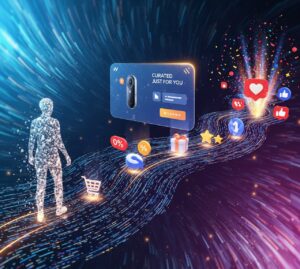How Better UI/UX Can Double Your E-commerce Revenue
Published June 4, 2025

Design
Introduction:
What Exactly Is UI/UX Design? (And Why Should You Care?)
First Impressions Matter – Big Time
Simplified Navigation
Speed Isn’t Just a Bonus – It’s a Necessity
The Psychology of Color and Fonts
Product Pages That Sell
Accessibility – Designing for Everyone
Analytics – Your Secret Weapon
Conclusion: Make Your Website a Delight to Use
It’s Not Just a Website, It’s Your Salesperson
When was the last time you stayed on a website that looked like it was designed in 2003? Exactly. In the bustling world of e-commerce, UI/UX design isn’t just about making things look pretty (though, let’s admit it, pretty does help); it’s about creating an experience that guides your customers effortlessly from "Ooh, I like this" to "Take my money!" Think of your e-commerce platform as your best salesperson. Would you hire someone who confuses customers, makes them wait unnecessarily, and hides the checkout button in a dark corner? Of course not. That’s where user interface (UI) and user experience (UX) design come in – the magical duo that can turn casual browsers into loyal customers. "Slow sites are digital nap time for customers."What Exactly Is UI/UX Design? (And Why Should You Care?)
- UI (User Interface):
- UX (User Experience):
First Impressions Matter – Big Time
Did you know? It takes users just 50 milliseconds (literally the blink of an eye) to form an opinion about your website. So, no pressure, but your homepage has a lot riding on it. Here are a few tips to get those first impressions right:- Keep it clean: A cluttered homepage is like a messy room. Nobody wants to stay there. Use white space wisely – it gives your content room to breathe.
- Make navigation idiot-proof: If users have to think about where to click, you’ve already lost them.
- Mobile-first design: More than 70% of e-commerce traffic comes from mobile devices. If your website doesn’t look good on a phone, you’re leaving money on the table.
Simplified Navigation
Ever gone grocery shopping and found yourself wandering aimlessly, searching for the one elusive aisle that stocks pickles? That’s how your users feel when your website navigation is all over the place. Clear menus and intuitive design are your best friends here. Categorize your products logically and use dropdown menus sparingly. Oh, and please don’t hide the search bar. A visible, functional search bar is like having a helpful store assistant – it’s a lifesaver. And don’t forget breadcrumbs! Not the edible kind (sadly), but those handy little navigational aids that show users where they are on your site. It’s like a GPS for your e-commerce store.Speed Isn’t Just a Bonus – It’s a Necessity
Here’s a fun fact or nightmare, depending on your website : 47% of users expect a page to load in 2 seconds or less. If your site takes longer, half your potential customers are already hitting the back button. How to speed things up:- Optimize your images (yes, you can have beautiful visuals without making them file sizes the size of Mount Everest).
- Minimize unnecessary code.
- Use a reliable hosting service.
The Psychology of Color and Fonts
Did you know colors can make people feel things? And no, I don’t mean just frustration when your website crashes.- Blue builds trust - hello, PayPal.
- Red creates urgency - that’s why sale signs are almost always red.
- Green symbolizes calm and nature - (perfect for eco-friendly brands.
Product Pages That Sell
Ahh, the product page – the place where the magic happens. Here’s how to make yours irresistible:- High-quality images: No one buys what they can’t see. Include multiple angles and, if possible, videos.
- Clear descriptions: Highlight the benefits, not just the features. (Nobody buys a blender for its wattage – they buy it to make smoothies without lumps.)
- Social proof: Reviews and ratings build trust. Add photos from happy customers if you can.
- Offer guest checkout: Not everyone wants to create an account just to buy a pair of socks.
- Be transparent about costs: Nobody likes surprise shipping fees at the last second. Show the total cost upfront.
- Multiple payment options: Credit card, PayPal, digital wallets – the more choices, the better.
Accessibility – Designing for Everyone
Inclusivity isn’t optional anymore – it’s essential. A website that’s accessible to all users, including those with disabilities, is not only good for business but also the right thing to do. Some simple steps:- Use alt text for images.
- Ensure your website is navigable via keyboard.
- Choose colors with sufficient contrast for readability.
Analytics – Your Secret Weapon
How do you know if your UI/UX design is working? By tracking it, of course! Use tools like Google Analytics or Hotjar to monitor user behavior. Some metrics to keep an eye on:- Bounce rate: Are users leaving after visiting just one page?
- Conversion rate: How many visitors are actually making purchases?
- Session duration: The longer users stay, the better your UX is doing.



 Let’s talk
Let’s talk